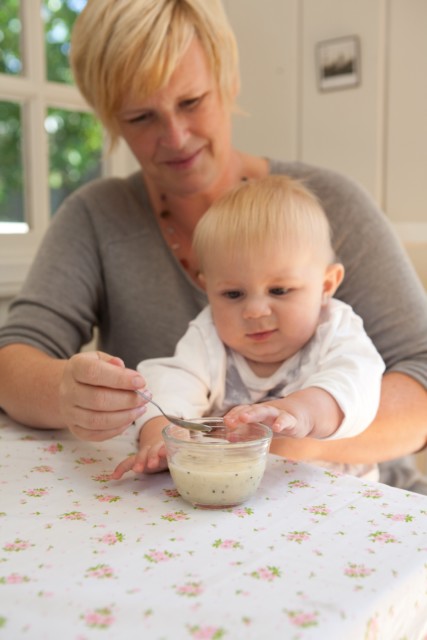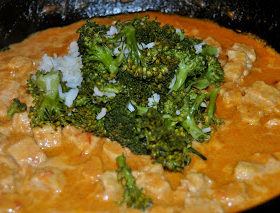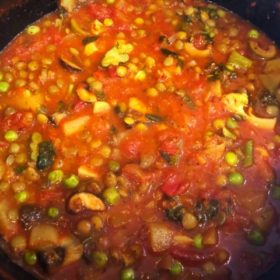
So often I hear that kids hate vegetables or how kids don’t eat vegetables. I have heard the same story repeatedly and I’m so tired of it. It might come as a surprise that kids do eat veggies — even love them. Just like adults, they have their favorites and some they just don’t like. For example, I have two kids who are not fans of tomatoes and one who picks them off the plant in our garden and eats them as snacks.

Kids naturally mimics adults around them and will eatmostly what the family eats. So, yes, if their parents don’t like veggies and eat only a few of them and only as a small side on the plate, their kids will do the same. It should not come as a huge surprise that, when the parents eat and love lots of veggies and eat a variety of them and are not scared of trying new things, the kids naturally will also like vegetables.

I also am a firm believer that it’s how you serve the vegetables that matters. If veggies are a major part of mealtime and are super fresh and prepared the right way, kids will be more likely to fall in love with at least some of them.
My kids all eat lots of varieties of veggies. It all has to do with the fact that my husband and I always have loved vegetables and we eat lots of them. I would say that our lunches and dinners usually contain at least 50% organic plants. We usually serve cooked vegetables along with raw. We never tell our kids that they won’t like something, and we always always let them try our food when they are curious. Of course they have gone through picky phases when they have eaten less — but still will eat — vegetables, especially in soups and stews or casseroles.
Here are a few tips to get your kids to eat more vegetables:
- Parents need to be role models and eat lots of veggies — Kids do look at us adults to lead the way when it comes to how they eat and what they eat. If we don’t eat our veggies, they won’t, either.
- Make sure to buy good quality vegetables — No one likes sad looking and sad tasting food, so make sure the veggies are fresh and come from a good source.
- Let kids help pick out the vegetables — My kids love having their own little bags when grocery shopping. They can pick out two vegetables of their choice to bring home in their own bags. They are way more interested in trying to eat them this way.
- Let kids help prepare the vegetables — First of all, kids love to help in the kitchen, and I have found that when they cook their own food, they tend to eat it because they are so proud of their achievements.
- Be a sneaky mom — Over the years, I also have learned how to add more vegetables to foods they like. For example, I make avocado ice cream; put zucchini, peas and dark leafy greens into smoothies; make creamy soups with broccoli and kale; and add carrots and zucchini to baked goods.
- Be calm and never get angry — We want the kids to enjoy sitting at the dinner table. Nothing will make eating more uncomfortable for children than confrontations and angry parents. It’s so easy to get frustrated when your kids won’t eat the food we’ve slaved over, but it’s important to know it’s a journey and work in progress. By making eating vegetables fun, they will eventually come around.











Dee
Stumble onto this site.
My kids eat SOME vegetables NOW but didn’t through any outside influence. I let them choose.
– One of my children disliked vegetables at all stages UP past toddler – so imitation wasn’t his problem.
– My daughter’s taste for certain vegetables changed drastically after hormonal changes in her body.
– Modern studies are suggesting genetic pre-aversion to SOME vegetables (palate and olfactory just to scratch the surface).
– Pregnant women can have huge changes in vegetable sensitivity as their babies (and hormones) reject certain food.
– Allergies to certain types of vegetables is a reality for some kids. Mild symptoms include vomiting that might look like a stubborn child to an untrained mother. Heck, people used to eat Arsenic as a health supplement.
While I agree that some kids can be indoctrinated to hate vegetables, I think it’s adults who are the indoctrinated. For instance, “For most of the twentieth century, kale was primarily used in the United States for decorative purposes; it became more popular as an edible vegetable in the 1990s.”
Now because someone decided to eat and modify kale for general consumption, it’s a “super food” that we won’t know the long-term side-effects of for decades–like when people used Arsenic as a beauty treatment. We’re influenced by a sort of blind allegiance to imperfect science and more perfect food lobbying.
Here’s one of my favorite recommended articles on calories: https://www.sciencehistory.org/distillations/counting-calories. This led to cigarettes and celery “diets.” But way more interesting how calories became a thing.
Other things to consider:
Lost of food nutrients since the 1950s
https://www.bbc.com/future/bespoke/follow-the-food/why-modern-food-lost-its-nutrients/